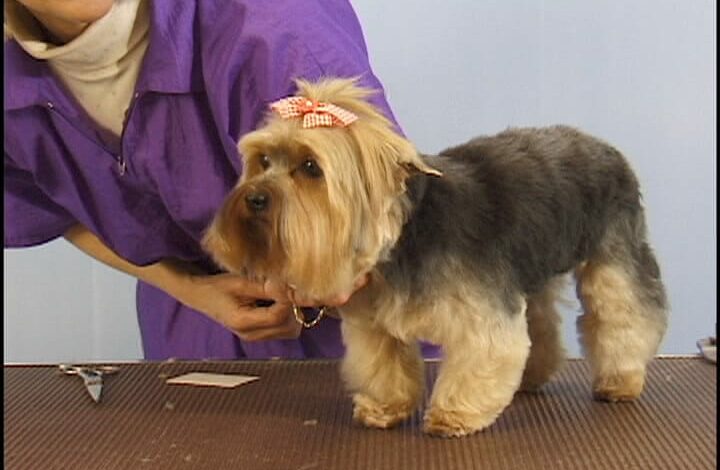
Welcome to the ultimate guide to mastering the art of stress-free dog grooming! We understand that keeping your furry friend looking and feeling their best can sometimes be a challenging task, especially if they’re not a fan of grooming sessions.
Fear not, for we have gathered the top tips and tricks that will transform your dog grooming experience into a joyful bonding moment between you and your pup. No more wrestling with a squirmy dog or dreading the aftermath of a haircut gone wrong.
With our expert advice, you’ll soon become a grooming guru, ensuring your pup’s happiness and health, all while saving time and energy. So let’s embark on this journey together and unlock the secrets to a happier, well-groomed canine companion.
Understanding your dog’s grooming needs
Every dog is unique, and so are their grooming needs. Understanding your dog’s specific requirements is the first step toward mastering the art of stress-free grooming. Considering factors such as your dog’s breed, coat type, age, and overall health is essential when determining their grooming routine.
Some Dog Grooming may require daily brushing to prevent matting, while others might only need a weekly or bi-weekly grooming session.
Begin by researching your dog’s breed and coat type. Dogs with long, thick coats, such as Golden Retrievers, will need more frequent grooming sessions to keep their fur tangle-free and healthy. On the other hand, dogs with short, smooth coats, like Beagles, may only need occasional brushing to remove loose hair.
If your Dog Grooming North York is a mixed breed, identifying the dominant coat type will help you develop a suitable grooming routine. In addition to brushing, pay attention to other grooming aspects such as nail trimming, ear cleaning, and dental care. These tasks should be performed regularly to ensure your dog’s overall health and well-being.
Observe your dog’s behavior during grooming sessions. Are they comfortable and relaxed, or do they show signs of stress and anxiety? Understanding your dog’s temperament and identifying any specific grooming-related fears will help you tailor your approach to make the experience more enjoyable for both of you.
For example, if your dog is fearful of the sound of clippers, you can gradually desensitize them to the noise by using positive reinforcement techniques. Remember, patience and consistency are key when addressing grooming-related anxiety.
Essential dog grooming tools and equipment
Having the right tools and equipment is crucial for a successful grooming session. Investing in high-quality grooming supplies will not only make the process more efficient but also more comfortable for your dog. Here’s a list of essential dog grooming tools and equipment that every pet parent should have on hand:
- Brushes and combs: Depending on your dog’s coat type, you may need different types of brushes and combs. For example, a slicker brush is ideal for dogs with thick, long coats, while a bristle brush is more suitable for short-haired breeds. A sturdy metal comb is a must-have for detangling and removing loose hair.
- Nail clippers: Regular nail trimming is important for your dog’s comfort and overall paw health. Choose a high-quality pair of nail clippers, either scissor-style or guillotine-style, depending on your preference. A nail grinder can also be a useful tool for smoothing rough edges after trimming.
- Ear cleaning supplies: Keeping your dog’s ears clean is essential for preventing infections and maintaining their health. Use a gentle ear-cleaning solution and soft cotton balls or gauze to carefully clean your dog’s ears. Avoid using cotton swabs, as they can cause damage to the delicate inner ear structures.
- Toothbrush and toothpaste: Regular dental care is crucial for maintaining your dog’s oral health. Use a toothbrush specifically designed for dogs and a pet-safe toothpaste to clean your dog’s teeth at least a few times a week.
- Shampoo and conditioner: Choose a high-quality, gentle dog shampoo and conditioner that is appropriate for your dog’s coat type and skin condition. Avoid using human shampoo, as it can be too harsh for your dog’s skin and may cause irritation.
- Grooming clippers: If your dog requires regular haircuts, investing in a set of grooming clippers can save you time and money. Choose a high-quality, quiet set of clippers with multiple blade attachments for various coat lengths.
- Grooming table: Although not a necessity, a grooming table can provide a stable and comfortable surface for grooming your dog, making the process more efficient and enjoyable for both of you. Look for a table with an adjustable height and a non-slip surface for added safety.
By having these essential tools and equipment on hand, you’ll be well-prepared for any grooming task that comes your way.
A step-by-step guide to stress-free dog grooming
Following a step-by-step guide can help ensure a smooth, stress-free grooming experience for both you and your dog. Here’s a comprehensive guide to help you achieve a successful grooming session:
- Preparation: Before beginning the grooming process, gather all your essential tools and equipment, and set up your grooming area in a quiet, well-lit space. Make sure your dog is relaxed and comfortable by taking them for a walk or engaging in a play session to release any pent-up energy.
- Brushing: Start by gently brushing your dog’s coat to remove any loose hair, dirt, and debris. Depending on your dog’s coat type, you may need to use different brushes or combs. Always brush in the direction of hair growth, and be gentle when working through tangles to avoid causing discomfort. Regular brushing helps distribute your dog’s natural oils, promoting a healthy, shiny coat.
- Bathing: If your dog requires a bath, use lukewarm water and a gentle, pet-safe shampoo to cleanse their coat. Be careful to avoid getting water or shampoo in your dog’s eyes, ears, or nose. Thoroughly rinse your dog’s coat to remove all shampoo residue, and follow up with a conditioner if necessary.
- Drying: Use a clean, absorbent towel to gently dry your dog’s coat. If your dog is comfortable with the sound of a hairdryer, you can use it on a low heat setting to speed up the drying process. Be sure to keep the dryer at a safe distance from your dog’s skin to prevent burns.
- Ear cleaning: To clean your dog’s ears, gently apply a small amount of ear cleaning solution to a cotton ball or gauze, and carefully wipe the outer part of the ear canal. Avoid inserting anything into your dog’s ear, as this can cause damage to the delicate structures inside. If you notice any signs of infection, such as redness, swelling, or a foul odor, consult your veterinarian for further advice.
- Nail trimming: Hold your dog’s paw firmly but gently, and trim the nails using the appropriate nail clippers. Be cautious not to cut the quick, sensitive blood vessel inside the nail, as this can cause pain and bleeding. If you’re unsure about where to cut, seek advice from a professional groomer or veterinarian.
- Teeth brushing: Using a dog-specific toothbrush and toothpaste, gently brush your dog’s teeth in a circular motion, focusing on the outer surfaces of the teeth. Aim to brush your dog’s teeth a few times a week to maintain oral health.
- Hair trimming: If your dog requires a haircut, use grooming clippers or scissors to carefully trim their coat to the desired length. Be cautious around sensitive areas such as the face, ears, and paws. If you’re inexperienced with trimming your dog’s hair, consider seeking guidance from a professional groomer or watching instructional videos online to build your confidence.
- Praise and reward: Throughout the grooming process, be sure to offer your dog plenty of praise and rewards for their cooperation. This will help create positive associations with grooming and make the experience more enjoyable for both of you.
By following this step-by-step guide, you’ll be well on your way to mastering the art of stress-free dog grooming.
Grooming tips for specific dog breeds
Different dog breeds have unique grooming requirements due to variations in coat types, skin conditions, and breed-specific health concerns. Here are some grooming tips for a few popular dog breeds:
- Labrador Retriever: Labs have a dense, waterproof double coat that requires regular brushing to remove loose hair and prevent matting. Use a slicker brush or rubber curry brush to groom your Lab, and focus on areas prone to shedding, such as the neck and hindquarters. Labs don’t typically require regular haircuts but may benefit from occasional trimming around the ears, tail, and paws.
- Poodle: Poodles have a curly, non-shedding coat that requires frequent grooming to prevent matting. Use a slicker brush and metal comb to thoroughly brush your Poodle’s coat, and be prepared to spend extra time on areas prone to tangles, such as the legs and ears. Poodles require regular professional grooming to maintain their coat’s shape and prevent overgrowth.
- German Shepherd: German Shepherds have a thick double coat that sheds heavily, especially during seasonal shedding periods. Use an undercoat rake or de-shedding tool to remove loose hair from your Shepherd’s coat, and brush regularly with a slicker brush to maintain coat health. German Shepherds don’t typically require haircuts but may benefit from occasional trimming around the ears, tail, and paws.
- Bulldog: Bulldogs have a short, smooth coat that is easy to maintain with regular brushing using a bristle brush or rubber curry brush. Focus on grooming your Bulldog’s facial folds and tail pocket, as these areas are prone to infection if not kept clean and dry. Use pet-safe wipes or a soft, damp cloth to clean these sensitive areas daily.
- Shih Tzu: Shih Tzus has a long, silky coat that requires daily brushing to prevent tangles and matting. Use a pin brush or comb to gently work through your Shih Tzu’s coat, paying extra attention to areas prone to matting, such as the ears, legs, and underbelly. Shih Tzus require regular professional grooming to maintain their coat’s appearance and prevent overgrowth.
By understanding the specific grooming needs of your dog’s breed, you can ensure their coat remains healthy and well-maintained.
Conclusion: The benefits of stress-free dog grooming for you and your pup
Dog Grooming North York
Mastering the art of stress-free dog grooming not only benefits your pup’s appearance and health but also strengthens the bond between you and your canine companion. By taking the time to understand your dog’s unique grooming needs and investing in quality grooming tools and equipment, you can create a positive grooming experience that will leave your dog feeling happy and relaxed.
Regular grooming can also help detect any potential health issues, such as skin infections or ear problems, early on, allowing for prompt treatment. In addition, grooming sessions provide an opportunity for you to bond with your dog, strengthening your relationship and promoting trust and affection.
Remember, grooming doesn’t have to be a stressful chore. With the right tools, techniques, and attitude, you can transform grooming sessions into a fun, enjoyable experience for both you and your furry friend. By following the tips and tricks outlined in this guide, you’ll be well on your way to mastering the art of stress-free dog grooming and ensuring your pup’s happiness and health.








